Masala Champion Fight
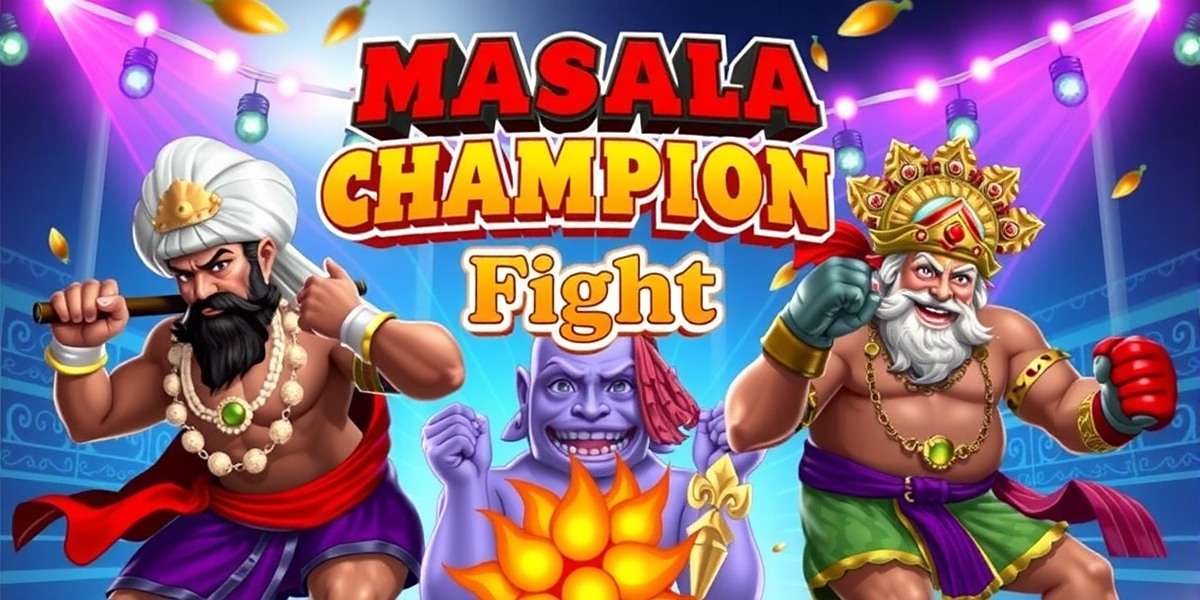
Introduction to Masala Champion Fight
Masala Champion Fight has taken the Indian gaming scene by storm since its release in 2022, bringing a unique blend of traditional Indian spices, regional martial arts, and over-the-top combat action that resonates deeply with players across the nation.
Developed by a passionate team of Indian game designers and published by Daman Games, this fighting game breaks away from the typical Western or Japanese martial arts tropes, instead drawing inspiration from India's rich and diverse combat traditions, from Kalaripayattu in Kerala to Gatka in Punjab and Thang-Ta in Manipur.
The genius of Masala Champion Fight lies in its innovative "Masala Power" system, where each character's special abilities are based on different Indian spices and condiments. Just as masalas (spice blends) give each regional cuisine its unique flavor, each fighter in the game brings their own special "masala" of skills and techniques to the arena.

What truly sets Masala Champion Fight apart is its authentic representation of India's cultural diversity. Rather than creating generic "Indian" characters, the game features fighters from specific regions, each with their own distinctive clothing, fighting styles, and dialogues in their native languages – creating a gaming experience that feels familiar and自豪 (pride-inducing) for Indian players.
From the bustling streets of Mumbai to the serene backwaters of Kerala, from the snow-capped Himalayas to the sandy beaches of Tamil Nadu, Masala Champion Fight brings India's incredible diversity to life through its characters, stages, and gameplay mechanics.
The game's popularity can be attributed to its perfect balance of accessibility and depth. Whether you're a casual player looking for quick, exciting matches or a competitive gamer aiming to master complex combos, Masala Champion Fight offers something for everyone – making it a favorite among students, professionals, and families across India.
Unlike many fighting games that focus solely on violence, Masala Champion Fight incorporates elements of humor, tradition, and cultural education, making it enjoyable for players of all ages. Parents often report that their children have become more interested in learning about different Indian states and their cultures after playing the game.
Gameplay Mechanics of Masala Champion Fight
Core Concept and Fighting System
Masala Champion Fight features a unique 3D fighting system that combines traditional fighting game mechanics with innovative elements inspired by Indian spices and combat styles. The game can be played in both 1v1 battles and team-based modes with up to 4 players.
At its core, the gameplay revolves around three main components: basic attacks, special moves, and the innovative "Masala Meter" – a power gauge that fills as players land attacks and perform combos.
When the Masala Meter is full, players can unleash devastating "Ultimate Masala Attacks" – visually spectacular finishing moves that reflect each character's regional background and signature spices.
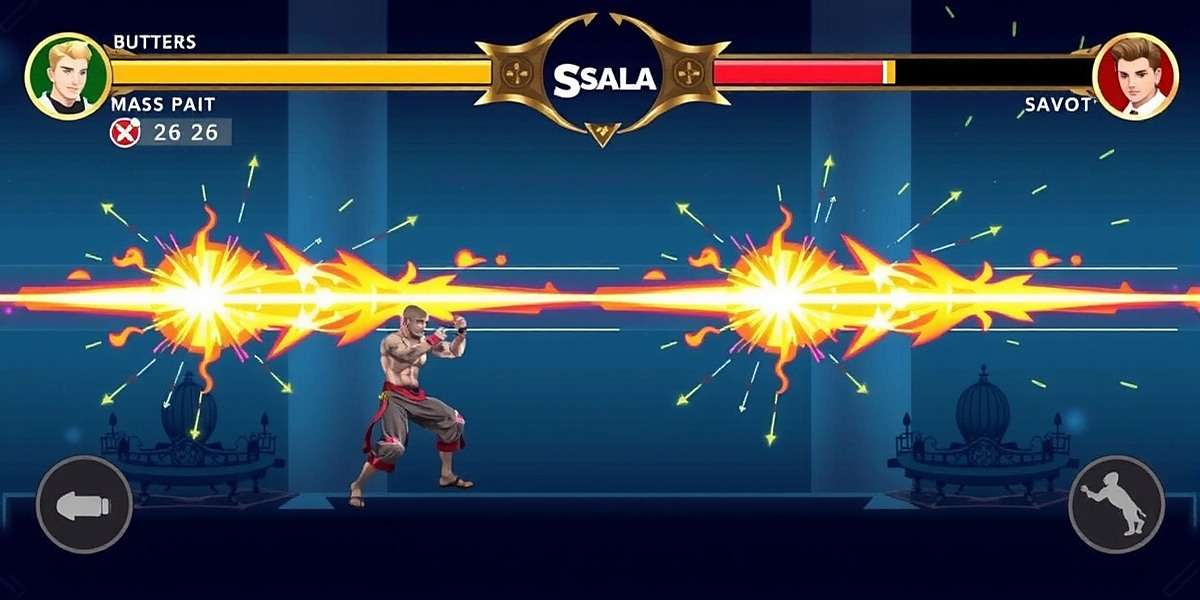
The Masala System Explained
The revolutionary Masala System is what truly makes Masala Champion Fight unique in the fighting game genre:
• Each character has a primary spice associated with them (like turmeric for a Tamil fighter or red chili for a Rajasthani warrior)
• Landing attacks builds up your Masala Meter, which has three levels
• At level 1, you can perform enhanced special moves with added spice effects
• At level 2, you can activate a "Spice Aura" that boosts your character's attributes temporarily
• At level 3, you can execute your character's Ultimate Masala Attack
• Combining different spices during team battles creates powerful "Masala Blends" with unique effects
For example, when a turmeric-based character teams up with a cumin-based character, their combined attacks gain both defensive properties (from turmeric) and speed boosts (from cumin) – just as these spices complement each other in Indian cooking.
Game Modes
Masala Champion Fight offers a variety of game modes to keep players engaged:
• Story Mode: Follow the "Great Masala Tournament" across India, learning about each character's background and motivations as you progress through their regional stages.
• Arcade Mode: Fight through a series of opponents to reach the final boss, with increasing difficulty levels.
• Multiplayer Battle: Compete against friends locally via Bluetooth or online against players from across India.
• Tournament Mode: Participate in bracket-style competitions with up to 16 players, either locally or online.
• Training Mode: Practice your moves and combos against a dummy opponent, with detailed frame data for advanced players.
• Daily Challenges: Complete spice-themed challenges to earn in-game currency and exclusive cosmetic items.
• Masala Master Mode: A unique single-player mode where you must master different spice combinations to overcome specific challenges.
"I love how the game modes cater to different types of players. When I have 5 minutes, I jump into a quick multiplayer match. On weekends, I dive into Story Mode to learn more about each character's background. The Daily Challenges keep me coming back every day!" – Ramesh, 28, Chennai
Controls and Accessibility
The developers of Masala Champion Fight have worked hard to make the game accessible to players of all skill levels while still offering depth for competitive players:
• Simple Mode: Designed for casual players, with simplified controls and auto-combos that can be executed with a single tap.
• Advanced Mode: For experienced fighting game players, with full control over all moves and combos.
• Customizable Controls: Players can adjust button layouts and sizes to suit their preferences.
• Accessibility Options: Includes features like adjustable difficulty, slow-motion mode for beginners, and colorblind-friendly visuals.
This accessibility has been crucial to the game's widespread appeal in India, where many players are new to the fighting game genre but are drawn in by the cultural familiarity and engaging gameplay.
Playable Fighters in Masala Champion Fight
Masala Champion Fight currently features 24 playable fighters, each representing different regions of India, with more characters planned for future updates. Each fighter brings unique abilities, fighting styles, and personalities to the game, reflecting the diversity of Indian culture.
Every character has a detailed backstory that connects to their region's history, traditions, and culinary heritage. Their fighting styles are based on regional martial arts, and their special moves incorporate local spices and ingredients.
North Indian Fighters
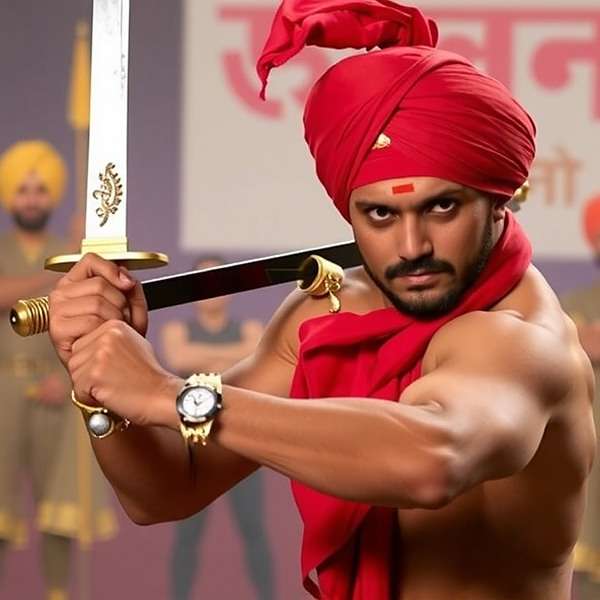
A proud Punjabi warrior who combines Gatka martial arts with his family's traditional turmeric farming heritage. Rajinder fights to save his village's ancient turmeric fields from being destroyed by a multinational corporation.
His fighting style is aggressive and straightforward, with powerful strikes and spinning attacks that reference the whirling movements of Gatka stick fighting.
Rajinder creates a protective barrier using powdered turmeric that absorbs damage and reflects a portion of it back to the attacker. When activated, his body glows with a golden hue, referencing turmeric's medicinal properties.
Rajinder spins rapidly, creating a tornado of turmeric, chili, and coriander powders that blinds the opponent while dealing continuous damage. As the storm intensifies, he delivers a powerful uppercut that sends the opponent flying.
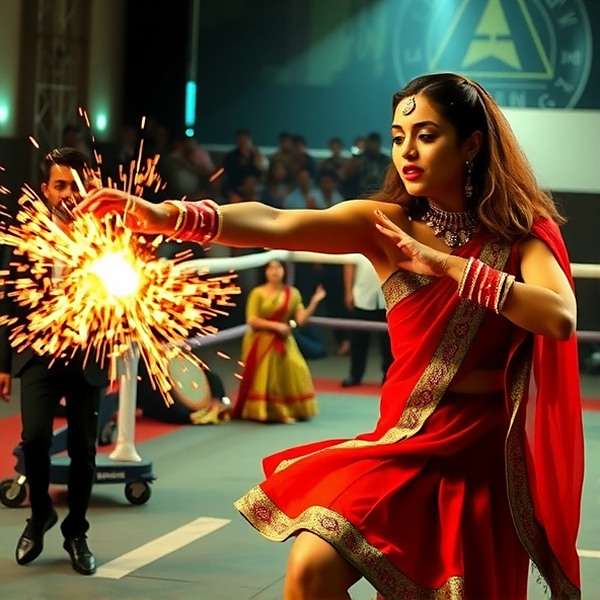
A street-smart Delhiite who learned combat techniques while protecting her family's spice shop in Chandni Chowk. Priya specializes in quick, agile movements and fiery attacks that reflect her personality and Delhi's vibrant street food culture.
Her fighting style is a mix of street fighting and traditional wrestling moves, adapted to her quick reflexes and smaller stature.
Priya throws a handful of powdered red chili at her opponent, temporarily blinding them while dealing burn damage. This move is especially effective against opponents with sensitive eyes (a humorous nod to Delhi's air quality issues).
Priya summons the chaotic energy of Delhi's famous market, creating illusions of street vendors, rickshaws, and food stalls that confuse the opponent. She then delivers a rapid series of strikes while shouting Delhi street slang, finishing with a powerful kick that sends the opponent crashing through a symbolic cart of spicy chaat.
South Indian Fighters

A descendant of ancient Tamil warriors who combines Kalaripayattu techniques with her knowledge of traditional Siddha medicine. Maya fights to preserve her grandmother's recipe book containing rare medicinal spice blends.
Her fighting style is fluid and graceful, with precise strikes and evasive movements that flow seamlessly into one another.
Maya summons sharpened curry leaves that fly toward her opponent in a controlled pattern, cutting them while releasing a soothing aroma that temporarily reduces the opponent's attack power (based on curry leaves' calming properties).
Maya creates a giant pot of boiling pongal (a traditional Tamil rice dish) that erupts, sending sticky rice projectiles at the opponent. As they struggle to free themselves from the sticky mess, Maya performs a series of precise Kalaripayattu strikes, finishing with a powerful blow that causes the opponent to be launched upward in an explosion of turmeric powder.
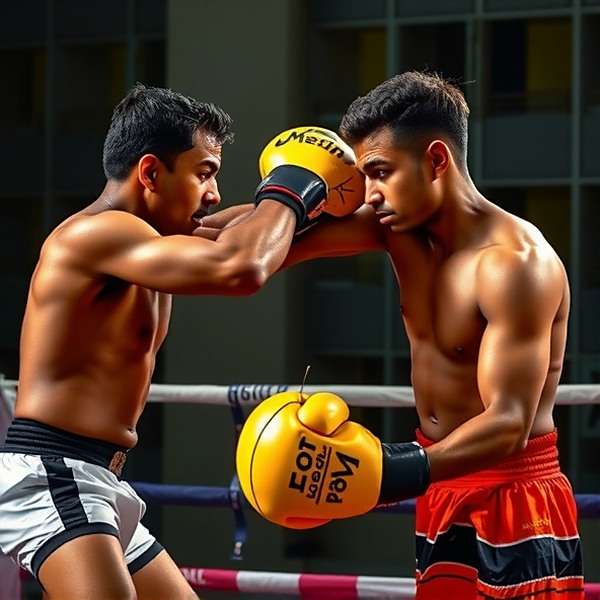
A former Kathakali dancer from Kerala who adapted the dramatic movements of this classical dance form into a unique fighting style. Ravi uses coconut-based attacks that reflect Kerala's abundant coconut plantations.
His fighting style is theatrical and expressive, with fluid movements that transition dramatically between defensive and offensive postures, much like the mudras (hand gestures) of Kathakali.
Ravi creates a protective shell of hardened coconut husks that absorbs damage. When broken, the shell explodes into sharp fragments that damage nearby opponents.
Ravi summons the power of Kerala's backwaters, creating a wave that carries him toward the opponent. He performs a series of acrobatic attacks while riding this wave, incorporating Kathakali movements and finishing with a powerful kick that slams the opponent into a symbolic boat filled with spices, causing a massive explosion of flavor and force.
East Indian Fighters
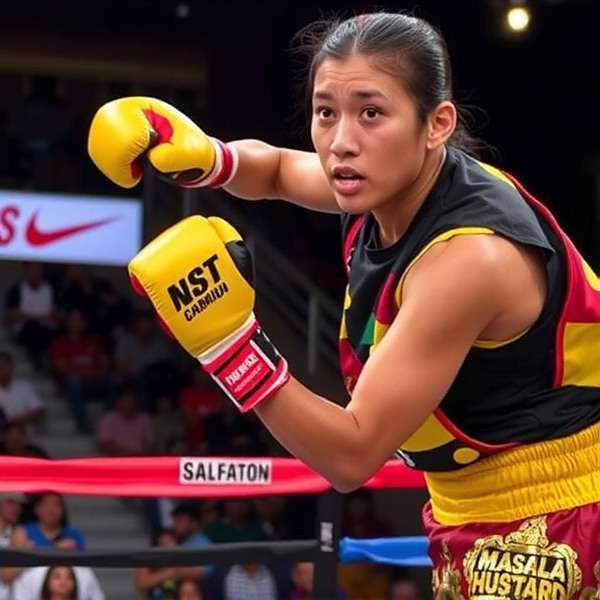
A skilled martial artist from Kolkata who combines traditional Bengali stick fighting with her family's mustard oil business techniques. Anjali's fighting style is elegant yet deadly, much like the poetry and martial arts traditions of Bengal.
Her movements are precise and economical, with sudden bursts of speed that catch opponents off guard.
Anjali creates a slippery surface of mustard oil that causes opponents to lose their footing. The oil also has a strong aroma that briefly disorients enemies, reducing their reaction time.
Anjali channels the power of Goddess Durga, growing in size temporarily as she wields symbolic weapons representing the ten arms of Durga. She performs a devastating sequence of attacks that culminate in a massive explosion of red vermilion powder, leaving a temporary mandala (sacred design) on the ground where the opponent was defeated.
West Indian Fighters
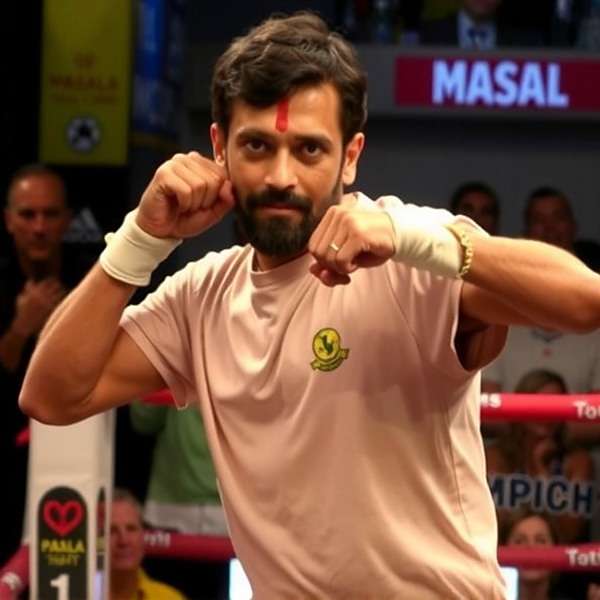
A descendant of Gujarati warriors who protects his community's ancient cumin farms. Vikram combines traditional Gujarati wrestling with quick, spinning movements inspired by dandiya raas dance.
His fighting style is energetic and rhythmic, with spinning attacks that build momentum and power as they continue.
Vikram releases a cloud of cumin powder that not only damages the opponent but also increases his own speed temporarily, as cumin is believed to boost energy in Ayurvedic medicine.
Vikram summons the festive energy of Navratri, creating a circle of dandiya sticks that spin around him. He then launches into a rapid spinning dance, striking the opponent repeatedly with each rotation. The attack finishes with a massive dandiya stick strike that sends the opponent flying, with the sticks exploding into a shower of colorful powder like during Holi.
Fighter Tier List (Community Rankings)
Based on competitive play and community feedback, here's the current tier list for Masala Champion Fight fighters as of the latest update:
- Maya Krishnan (Tamil Nadu)
- Rajinder Singh (Punjab)
- Anjali Das (West Bengal)
- Vikram Patel (Gujarat)
- Priya Sharma (Delhi)
- Arjun Reddy (Telangana)
- Meera Iyer (Karnataka)
- Ravi Varma (Kerala)
- Deepak Mishra (Uttar Pradesh)
- Sunita Bora (Assam)
- Jaspreet Kaur (Haryana)
- Ganesh Prabhu (Goa)
- Radha Yadav (Rajasthan)
- Shiva Kumar (Bihar)
- Neha Singh (Madhya Pradesh)
It's important to note that while this tier list reflects competitive play at the highest level, any character can be effective in the right hands. Many players find success with "lower tier" characters by mastering their unique abilities and finding creative combinations with other fighters.
Download Statistics and Reach in India
Impressive Growth of Masala Champion Fight Across India
Since its launch in early 2022, Masala Champion Fight has achieved remarkable success in the Indian gaming market, quickly becoming one of the most downloaded fighting games in the country's history.
The game's unique blend of cultural familiarity and engaging gameplay has helped it stand out in a crowded market, attracting players who don't typically play fighting games but are drawn in by the authentic Indian representation.
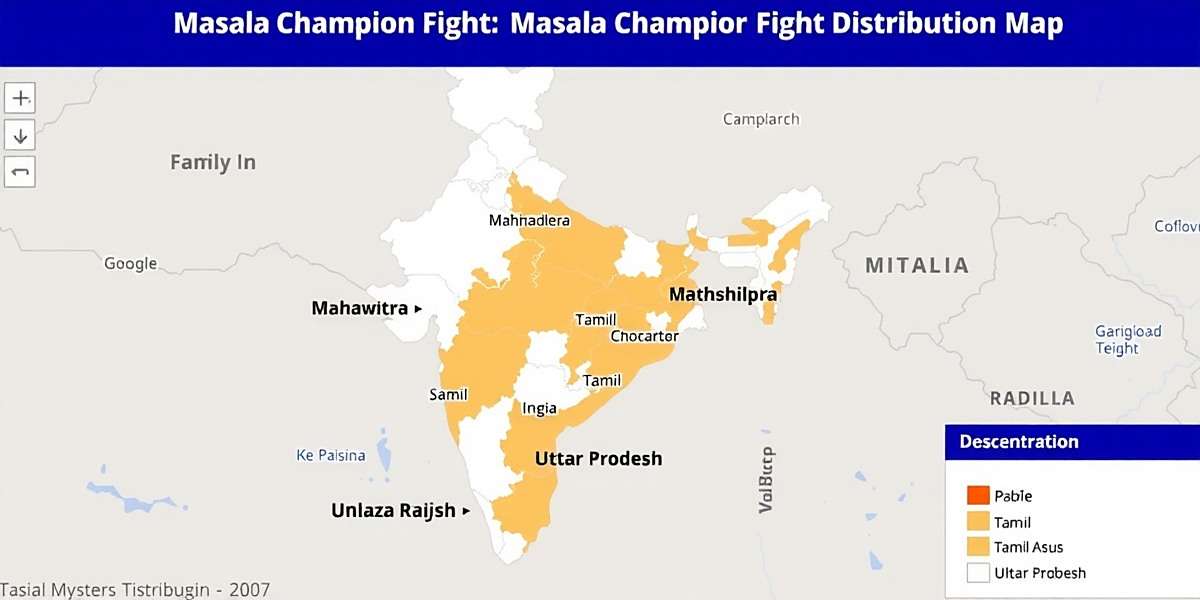
Regional Popularity Breakdown
Masala Champion Fight has found particular success in these Indian states:
• Maharashtra – 21% of total players, with Mumbai being the city with the highest concentration of players
• Tamil Nadu – 17% of total players, drawn to the authentic representation of Tamil culture and fighting styles
• Uttar Pradesh – 15% of total players, appreciating the game's accessibility and family-friendly content
• Karnataka – 12% of total players, with Bangalore showing particularly high engagement
• West Bengal – 9% of total players, responding well to the Bengali character Anjali Das
What's particularly notable is the game's strong performance in tier-2 and tier-3 cities, where it has been embraced by players who often feel underrepresented in mainstream gaming.
Platform Availability and Optimization
Masala Champion Fight is available across multiple platforms to ensure maximum accessibility for Indian players:
• Android: Available on Google Play Store with a size of 750MB. A "Lite" version (200MB) is also available for devices with limited storage.
• iOS: Available on the Apple App Store, optimized for both iPhone and iPad.
• Feature Phones: A simplified version optimized for 4G feature phones, which remains popular in rural areas.
The development team has worked extensively to ensure the game runs smoothly on a wide range of devices, from budget smartphones priced under ₹6,000 to high-end flagship models. This commitment to optimization has been crucial to the game's success across India's economically diverse population.
Special data-saving features allow players with limited data plans to enjoy the game, with options to reduce graphical quality and disable automatic updates of non-essential content.
Demographic Insights
Player data for Masala Champion Fight reveals some interesting trends about its audience:
• Age Distribution: 45% of players are between 13-24 years old, 35% between 25-35, and 20% are 36 and above – showing broad appeal across generations.
• Gender Balance: 60% male, 40% female – a more balanced ratio than most fighting games, which typically see 75%+ male players.
• Playing Habits: The average player spends 42 minutes per day in the game, with peak activity between 7-10 PM.
• Social Aspect: 72% of players engage in multiplayer modes at least once a week, with many forming regular gaming groups with friends and family.
These demographics highlight how Masala Champion Fight has succeeded in creating a game that appeals to a broad cross-section of Indian society, transcending typical gaming stereotypes.
Player Reviews and Reception
Masala Champion Fight has received overwhelmingly positive reviews from Indian players, with an average rating of 4.7 out of 5 across all platforms. This impressive score is based on over 1.8 million reviews, making it one of the highest-rated fighting games in Indian app stores.
What's particularly striking about the reviews is the emotional connection players feel to the game, with many expressing pride at seeing their culture represented accurately and respectfully in a high-quality game.
Player Testimonials from Across India
"As a Tamilian living in Canada, Masala Champion Fight makes me feel connected to my roots. Maya's character speaks in authentic Tamil with the right slang, and her Pongal attack brings back so many memories of celebrating the festival with my family. It's more than a game – it's a piece of home." – Karthik, 31, Toronto (Originally from Chennai)
"I've never been good at fighting games, but Masala Champion Fight is different. The controls are easy to learn, and I love how each character represents a different part of India. My friends and I from different states always argue about which region has the best fighters – it's become a fun way to learn about each other's cultures!" – Aisha, 22, Hyderabad
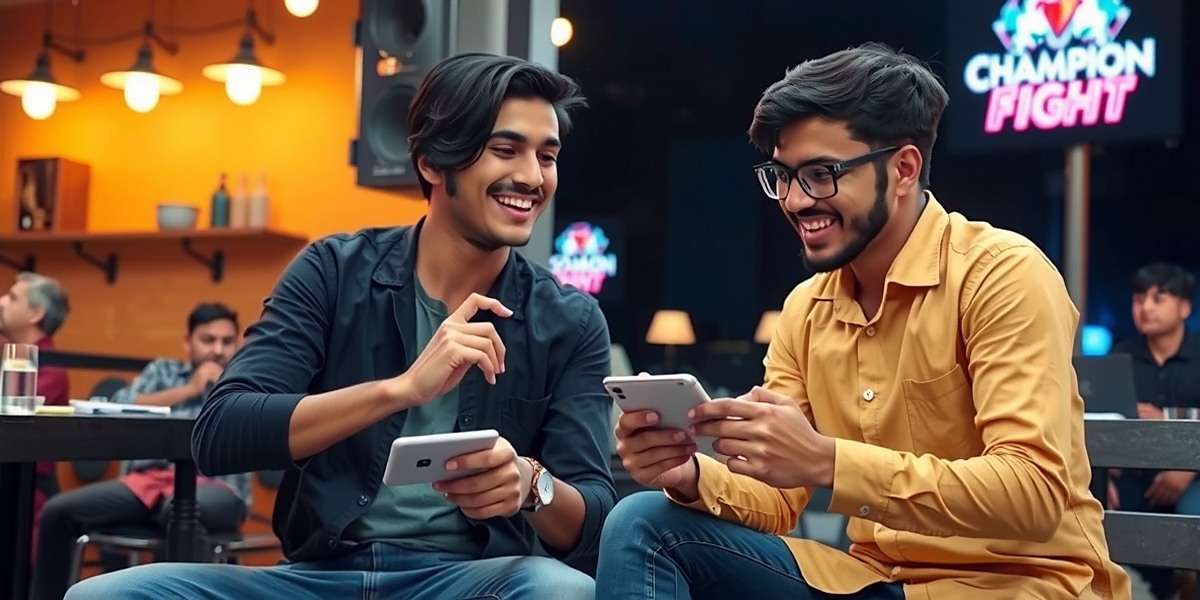
"The attention to detail is amazing! As a Punjabi, I was thrilled to see Rajinder's character wearing a proper pagri (turban) and using Gatka moves correctly. His turmeric attacks are brilliant – my grandmother has always said turmeric has healing powers, and now it has fighting powers too! My kids now ask me about Punjab's culture while we play together." – Sukhdev, 45, Amritsar
"Finally, a fighting game that doesn't make me feel like an outsider! Masala Champion Fight gets the little things right – the way characters speak, their clothing details, even the food references. When I used Anjali's mustard oil attack, it reminded me of my mother's kitchen in Kolkata. This is how representation should be done." – Sourav, 29, Mumbai (Originally from Kolkata)
Critical Acclaim and Awards
Beyond player reviews, Masala Champion Fight has received widespread recognition from gaming critics and industry bodies:
• Winner of "Best Indian Game" at the 2023 Indian Game Developers Conference
• Received the "Cultural Excellence in Gaming" award from the Ministry of Information and Broadcasting
• Featured in Google Play's "Best of 2023" collection in India
• Nominated for "Best Mobile Fighting Game" at the Global Mobile Gaming Awards
• Praised by The Times of India for "redefining cultural representation in gaming with its authentic and respectful portrayal of India's diversity"
Critics have particularly highlighted how Masala Champion Fight avoids cultural stereotypes, instead presenting nuanced, respectful portrayals of different Indian regions and their traditions. As one reviewer noted, "This game doesn't just use Indian culture as a skin – it's built from the ground up with a deep understanding and appreciation of what makes India's diverse traditions special."
Constructive Feedback and Developer Response
The development team behind Masala Champion Fight has established a reputation for listening to player feedback and implementing meaningful changes. Some common suggestions from players that have been addressed include:
• Adding more characters from Northeast India (addressed with the introduction of Sunita Bora from Assam in the 2023 update)
• Improving offline functionality for players with unreliable internet (addressed with enhanced offline modes)
• Adding more regional festivals as in-game events (addressed with the introduction of Pongal, Bihu, and Lohri events)
• Expanding the story mode with more regional variations (addressed with region-specific story chapters)
This responsive approach to development has fostered a strong sense of community ownership, with many players feeling that they have a direct impact on the game's evolution. The developers regularly host live streams in multiple languages to discuss upcoming features and gather feedback.
Localization and Regional Adaptations
While many international games release "Indian versions" with just Hindi subtitles, Masala Champion Fight has taken a far more comprehensive approach to localization that truly respects India's linguistic and cultural diversity.
The game's localization goes beyond simple translation to create region-specific experiences that make players from different parts of India feel seen and celebrated.
Language Support and Voice Acting
Masala Champion Fight currently supports 15 Indian languages, with more planned for future updates:
• Hindi (with regional variations for Uttar Pradesh, Bihar, Rajasthan)
• Bengali
• Tamil
• Telugu
• Marathi
• Gujarati
• Punjabi (both Gurmukhi and Shahmukhi scripts)
• Kannada
• Malayalam
• Odia
• Urdu
• Assamese
• Nepali
• Konkani
• Manipuri
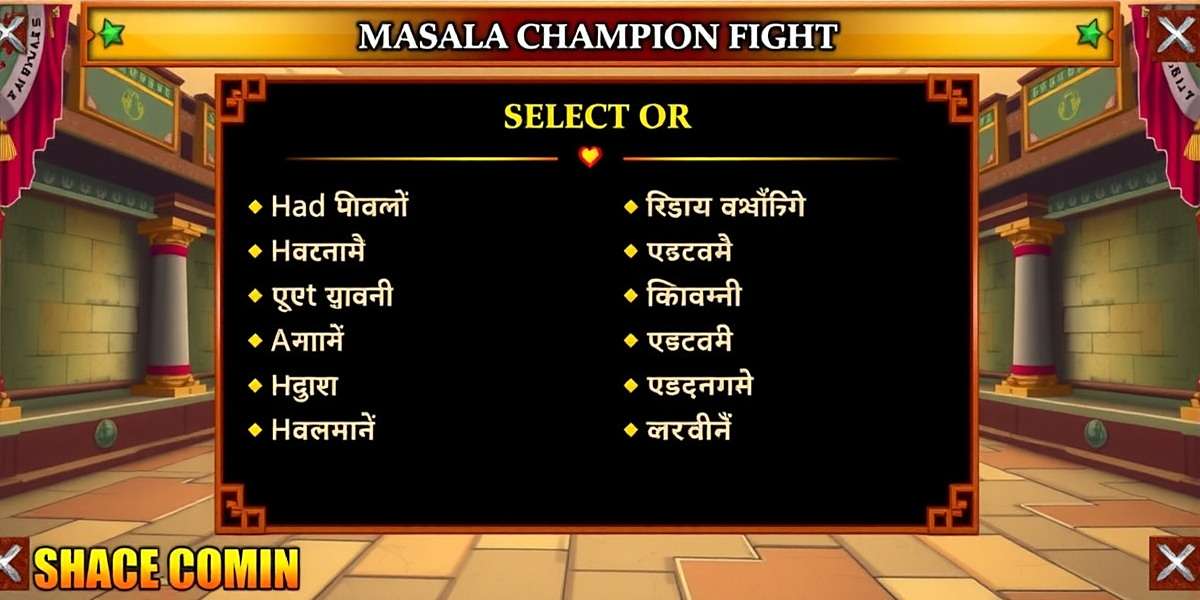
What truly sets the game apart is its region-specific voice acting. Each character speaks in their native language with authentic accents and regional slang, performed by voice actors from those specific regions.
For example, the Punjabi character Rajinder uses different vocabulary and pronunciation than Punjabi speakers from different regions, and the Tamil character Maya uses Chennai-specific slang that resonates with players from that city.
The game also includes region-specific humor and references that only players from those areas would fully appreciate, creating a sense of insider knowledge and pride.
Regional Content Variations
Masala Champion Fight features subtle content variations based on the player's region, creating a more personalized experience:
• Regional Menus: The in-game menu art changes based on your location, featuring local landmarks and art styles.
• Festival Events: While major national festivals are celebrated by all players, regional festivals receive special emphasis based on location.
• Local Ads: Players see in-game advertisements for products and events relevant to their region.
• Weather Effects: Arena weather effects sometimes reflect real-world seasonal conditions in different regions.
• Regional Challenges: Daily challenges sometimes reference local events or traditions.
"I was amazed when I started playing during Durga Puja in Kolkata – the game's loading screens featured pandals from famous Kolkata Durga idols, and Anjali had a special Puja skin with traditional Bengali jewelry. It felt like the game was celebrating with us!" – Debjani, 26, Kolkata
Festival Celebrations in the Game
Festivals are a cornerstone of Indian culture, and Masala Champion Fight celebrates them with great enthusiasm and authenticity throughout the year:
• Diwali: All fighters receive special festive outfits, arenas are decorated with diyas and rangoli, and firecracker effects accompany special moves.
• Holi: Players can throw colored powder at opponents during matches, and winning matches unlocks special Holi-themed skins.
• Pongal/Makar Sankranti: Special kite-flying mini-games, and a rice-based healing item is available in matches.
• Eid: Fighters receive new outfits inspired by traditional Eid clothing, and special sweet-based power-ups are available.
• Christmas: Arena decorations featuring Indian-style Christmas elements, and special events based on local traditions like Goan Christmas celebrations.
• Regional Festivals: Special events for Onam, Bihu, Vishu, Ganesh Chaturthi, and other regional celebrations, with content that authentically represents local traditions.
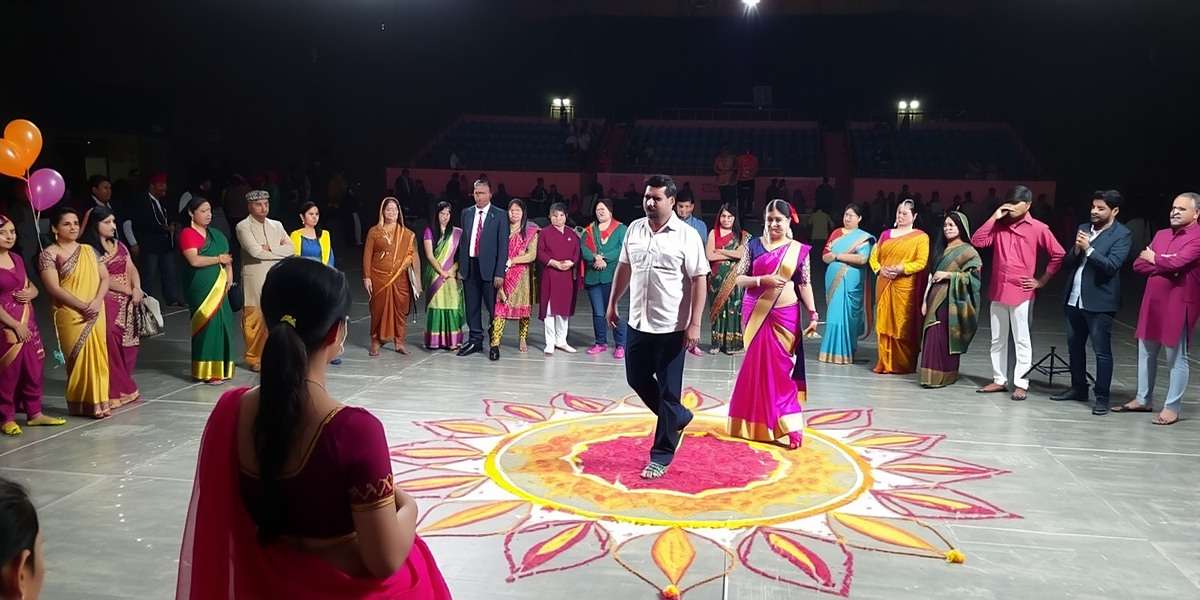
These festival events have become highly anticipated by the Masala Champion Fight community, with players often sharing screenshots of their characters in festive outfits on social media and organizing special tournaments during major celebrations.
The developers work with regional cultural experts to ensure these festival representations are accurate and respectful, avoiding stereotypes while capturing the essence of each celebration.
Community and Competitive Scene
The Masala Champion Fight community has grown into one of the most active and passionate gaming communities in India, with millions of players engaging daily through in-game interactions, social media, and local events.
What's particularly unique about the community is how it brings together players from different regions of India, fostering cross-cultural understanding through their shared love of the game.
Community Platforms and Channels
Players of Masala Champion Fight connect through various platforms:
• Official Forums: With over 900,000 registered users, featuring regional sub-forums in different languages.
• Facebook Groups: Regional groups with combined membership exceeding 2.5 million, where players share tips and organize local meetups.
• WhatsApp Communities: Thousands of regional and language-specific groups, many with 500+ members.
• YouTube Channels: Hundreds of dedicated channels with tutorials, match highlights, and character breakdowns, some with over 1 million subscribers.
• Instagram: Popular accounts showcasing custom character designs and fan art, with the official account having over 3 million followers.
• Discord Servers: With separate channels for different languages, regions, and skill levels.
• Telegram Groups: Particularly popular in North India for organizing quick matches and sharing strategies.
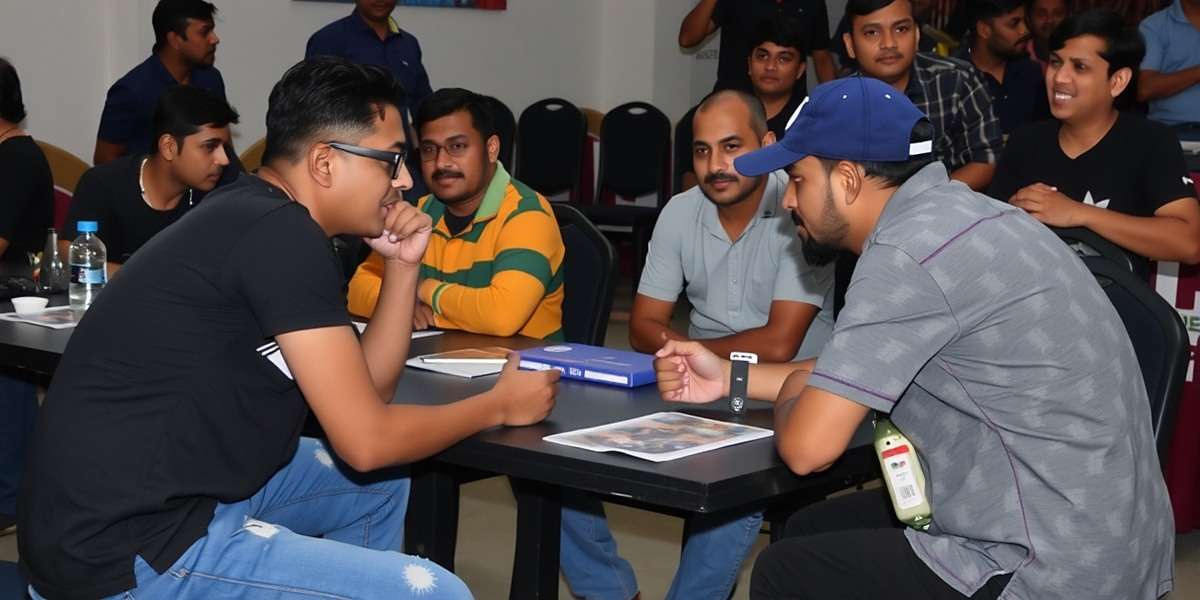
Competitive Tournaments and Events
The competitive scene for Masala Champion Fight has grown rapidly, with both official and community-organized tournaments taking place across India:
• National Masala League: The official national tournament with regional qualifiers and a grand final in Mumbai, offering a prize pool of ₹50 lakhs.
• Regional Championships: Official tournaments in major cities like Delhi, Chennai, Kolkata, and Hyderabad, with winners qualifying for the national league.
• College Tournaments: Popular across Indian colleges, with inter-college competitions drawing large crowds.
• Community Events: Local tournaments organized by players in cafes, gaming centers, and community halls, often coinciding with festivals.
• Online Leagues: Regular online competitions with cash prizes and ranking points for the official leaderboards.
These tournaments have helped create local celebrity players known for their expertise with specific characters, with some top players earning sponsorships and making a career from competitive gaming.

The biggest Masala Champion Fight tournament of the year, with regional qualifiers in 12 cities across India. The grand final will be held in Mumbai on August 30, with a prize pool of ₹1 crore. Registration opens on May 1, 2024, through the official app and website.
New for 2024: Special women's category with separate prizes and a team-based mode where each team must represent different Indian regions.
Player-Generated Content
The Masala Champion Fight community is highly creative, producing a wealth of user-generated content:
• Strategy Guides: Detailed character breakdowns and combo guides in multiple languages, shared on forums and YouTube.
• Fan Art: Stunning illustrations of fighters in new outfits, often blending regional art styles with game characters.
• Custom Skins: Players design and share concept art for new character skins, some of which have been officially adopted by the developers.
• Fan Fiction: Creative stories exploring the backgrounds and relationships between characters, often incorporating regional myths and legends.
• Music Remixes: Remixes of the game's soundtrack using traditional regional instruments, shared on music platforms.
• Live Streams: Daily streams of gameplay, tournaments, and character showcases on platforms like YouTube Gaming and Facebook Gaming.
The developers regularly highlight the best community content through official channels, and even hold contests for fan art and skin designs, with winners receiving in-game rewards and recognition.
Developer-Community Interaction
The development team behind Masala Champion Fight has built a strong relationship with its community through regular interaction:
• Monthly live streams in multiple languages to announce updates and answer player questions.
• Regional community meetups where developers gather feedback directly from players.
• Open beta testing for new characters and features, with invitations extended to active community members.
• Social media engagement where the team responds to player comments and shares behind-the-scenes content.
• "Masala Makers" program that invites passionate players to provide ongoing feedback on development.
This open communication has created a sense of partnership between developers and players, with many community members feeling they have a stake in the game's success and direction.
Indian Player Strategies and Guides
The Masala Champion Fight community has developed a wealth of strategies and techniques over the game's lifetime, with regional player communities often developing unique approaches based on their local fighting styles and preferences.
Beginner's Guide to Masala Champion Fight
For new players just starting with Masala Champion Fight, experienced community members recommend these essential tips:
1. Start with the tutorial: The game's tutorial does an excellent job of explaining the basics, but many new players skip it. Take the time to complete it – it will save you frustration later!
2. Choose the right starter character: For beginners, characters like Rajinder (Punjab) and Priya (Delhi) are recommended for their balanced abilities and easier combos.
3. Focus on building your Masala Meter: Many beginners try to use special moves too early. Instead, focus on landing basic attacks to build your meter for more powerful moves later in the match.
4. Learn to block and dodge effectively: Defense is just as important as offense. Practice timing your blocks to reduce damage and using dodges to avoid powerful attacks.
5. Complete daily challenges: These provide valuable in-game currency and help you practice different characters and techniques.
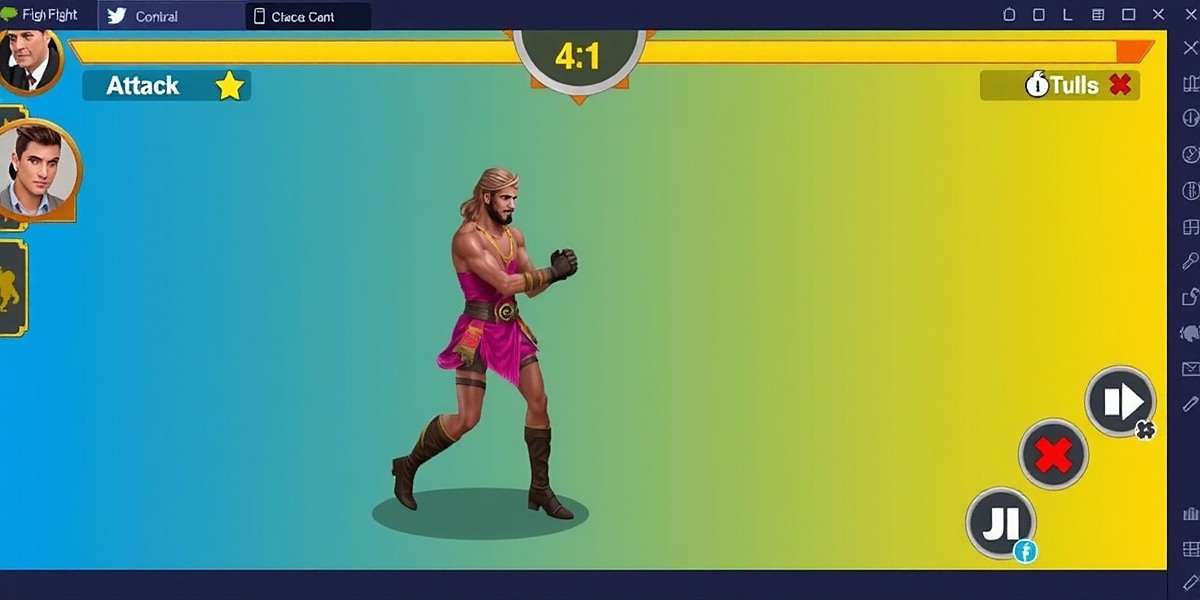
6. Experiment with different characters: Don't just stick with one fighter. Try all the characters to find which playstyle suits you best – you might be surprised!
7. Watch tutorial videos: The community has created excellent guides for beginners, many in regional languages.
8. Play against friends first: Multiplayer against experienced online players can be intimidating. Start with local matches against friends to build your skills.
Advanced Strategies from Top Players
India's top Masala Champion Fight players have developed advanced techniques that showcase the game's depth:
• Masala Meter Management: Advanced players learn to precisely control their Masala Meter, sometimes intentionally not using it to set up more devastating combinations later in the match.
• Character Counterpicking: Understanding which characters are strong against others is crucial in competitive play. For example, fast characters like Priya can counter slower, heavier characters.
• Combo Breakers: Mastering the timing to break out of opponent combos using a small portion of your Masala Meter can turn the tide of a match.
• Stage Awareness: Different stages have unique features that can be used strategically. Top players learn to use these environmental elements to their advantage.
• Mind Games: Feinting attacks and creating patterns that confuse opponents is a key part of high-level play.
"In competitive Masala Champion Fight, it's not just about knowing your character's moves – it's about understanding your opponent's psychology. I spend as much time studying my opponents' habits as I do practicing my own combos. The best players adapt mid-match, like a good cook adjusting spices to perfect the dish." – Vijay "SpiceMaster" Kumar, National Masala League 2023 Champion
Regional Play Styles
One fascinating aspect of Masala Champion Fight is how players from different regions of India have developed distinct play styles:
• North Indian players often favor aggressive, straightforward approaches with heavy damage characters like Rajinder, reflecting the region's wrestling traditions.
• South Indian players typically prefer more technical, combo-oriented play with characters like Maya, showcasing the precision of Kalaripayattu martial arts.
• East Indian players often excel at defensive strategies and counterattacks with characters like Anjali, mirroring the strategic elements of Bengali wrestling.
• West Indian players frequently use unpredictable movement patterns with characters like Vikram, reflecting the energetic dandiya raas dance influences in their fighting styles.
These regional differences create a rich meta-game where national tournaments become not just battles between players, but friendly competitions between different regional approaches to the game.
Character-Specific Tips
Community experts have developed specialized strategies for each character in Masala Champion Fight:
• For Rajinder (Punjab): Use the Turmeric Shield defensively to build your Masala Meter while your opponent wastes attacks. Save your Ultimate for when they're cornered.
• For Maya (Tamil Nadu): Master the timing of her Curry Leaf Barrage to control space and keep opponents at a distance. Chain light attacks into her special moves for continuous pressure.
• For Anjali (West Bengal): Use the Mustard Oil Slick to create distance when needed, then follow up with quick counterattacks. Her speed makes her excellent at hit-and-run tactics.
• For Vikram (Gujarat): Use spinning attacks to build momentum and fill your Masala Meter quickly. His Cumin Cloud works great when fighting multiple opponents in team battles.
• For Priya (Delhi): Her Chili Flash is excellent for breaking opponent combos. Use her speed to attack from unexpected angles and keep opponents guessing.
These character-specific strategies are constantly evolving as the community discovers new combos and techniques, keeping the game fresh and engaging for long-term players.
Future Updates and Roadmap
The development team behind Masala Champion Fight has announced an exciting roadmap for the game's future, with several major updates planned that will introduce new characters, features, and gameplay improvements.
Upcoming Features in 2024
1. Northeast India Character Pack: Four new fighters representing Assam, Meghalaya, Nagaland, and Manipur, with fighting styles based on regional martial arts like Thang-Ta and Sarit-Sarak.
2. Story Mode Expansion: New chapters exploring the origins of the Great Masala Tournament, with region-specific storylines that delve deeper into local myths and legends.
3. Clan System: Players will be able to form regional clans, compete in clan wars, and earn exclusive clan rewards and customization options.
4. Enhanced Training Mode: New features for serious players, including frame data display, combo recording, and AI opponents with customizable behavior.
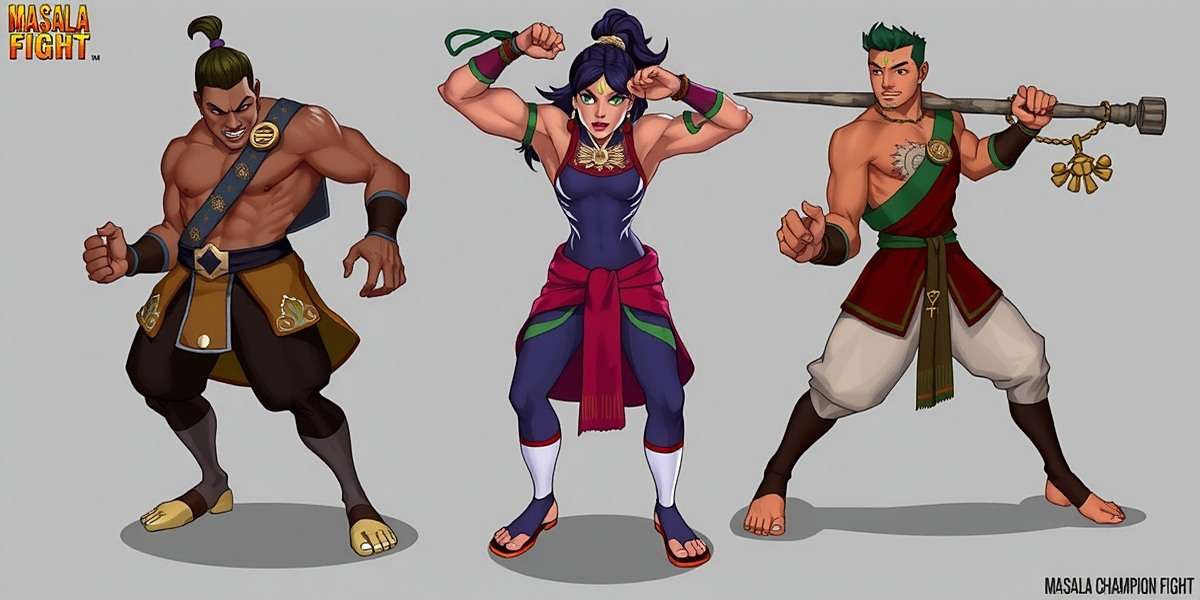
5. Regional Arena Packs: New stages based on iconic Indian locations, including the backwaters of Kerala, the ghats of Varanasi, the tea gardens of Darjeeling, and the forts of Rajasthan.
6. Special Events Calendar: More frequent regional festival events with unique gameplay modes and exclusive rewards tied to local traditions.
7. Accessibility Improvements: New features for players with disabilities, including customizable controls, text size adjustments, and enhanced colorblind options.
8. Cross-Platform Play: Players on Android and iOS will be able to compete against each other, breaking down platform barriers.
Long-Term Vision
The developers of Masala Champion Fight have shared their long-term vision to create more than just a game – they aim to build a platform that:
• Celebrates and preserves India's diverse martial arts traditions through interactive experiences
• Creates opportunities for Indian gamers to compete at an international level
• Provides a platform for Indian voice actors, artists, and musicians to showcase their talents
• Educates players about India's rich cultural heritage through engaging gameplay
• Builds bridges between different regions of India through shared gaming experiences
To achieve these goals, the team is collaborating with cultural institutions, martial arts experts, and regional artists to ensure the game remains authentic while continuing to evolve.
Game Types
This game is recommended by daman games. To discover more quality Indian games, please visit daman games.